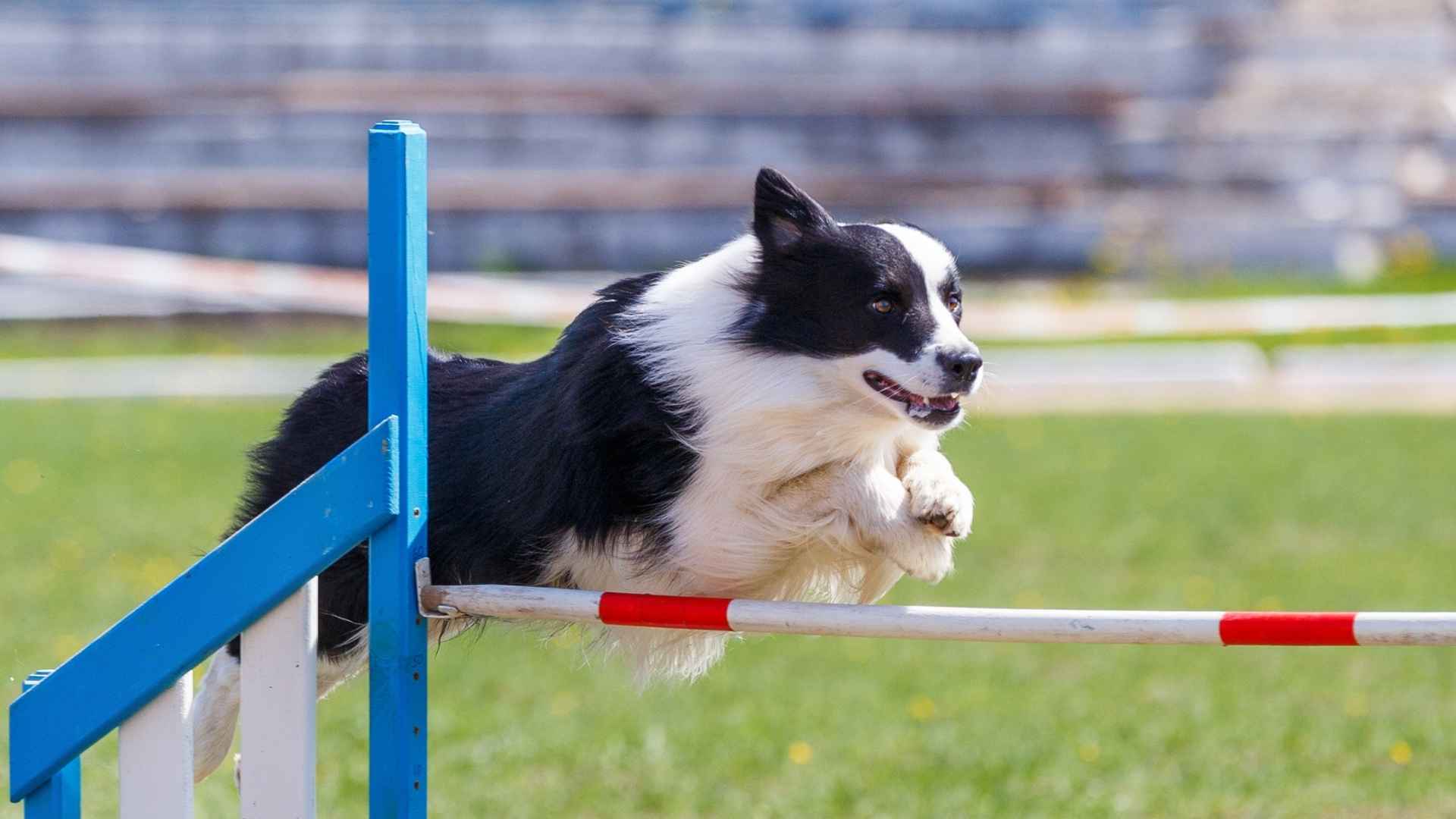When it comes to sporting dogs, think less “lazy Sunday” and more “marathon training partner.” Whether it’s sprinting across fields, leaping into lakes, or chasing anything that moves, sporting dogs were born with a mission: to work, play, and never, ever stop.
Sporting dogs generally fall into four main categories: spaniels, pointers, retrievers, and setters. These high-energy dog breeds were originally developed for tasks like hunting, retrieving game, agility training, and performing activities that require stamina and endurance.
They’re often highly intelligent and thrive on both mental and physical stimulation. Without a proper outlet for their boundless energy, these high-octane dogs can quickly become bored, leading to destructive behaviors or anxiety.
If you’re ready to match their energy, read on to discover the high-energy dog breeds and why they might be the perfect (or perfectly exhausting) companion for your lifestyle.
Hyperactive Sporting Dog Breeds
1. Chesapeake Bay Retriever
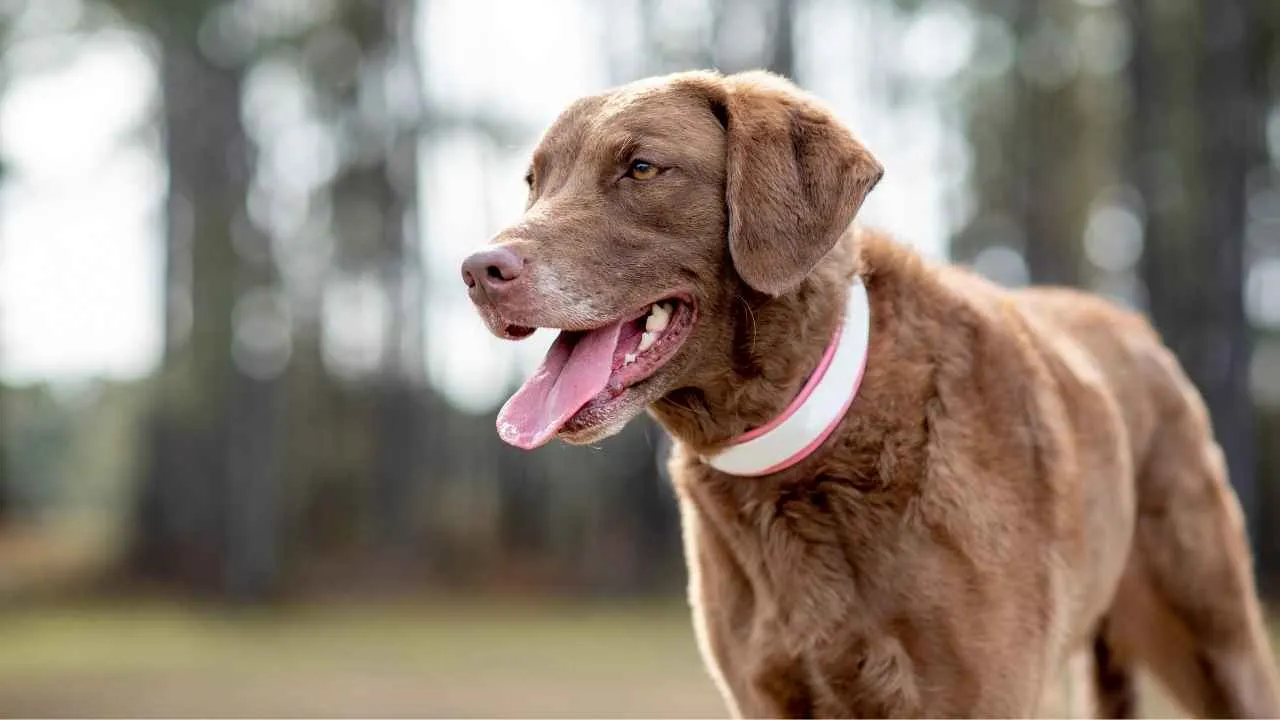
The Chesapeake Bay Retriever, also known as the “Chessie,” is a powerhouse of loyalty, energy, and love for adventure. Imagine a high-energy dog that’s always ready for a swim, a hunt, or a game of fetch—one that’ll follow you from room to room with a wagging tail and eager eyes, as if saying, “What’s next, boss?”
Known for its iconic waterproof coat, making it a true champion in water. These strong, athletic gundogs stand between 21 to 26 inches at the shoulder, with males weighing in at up to 80 pounds.
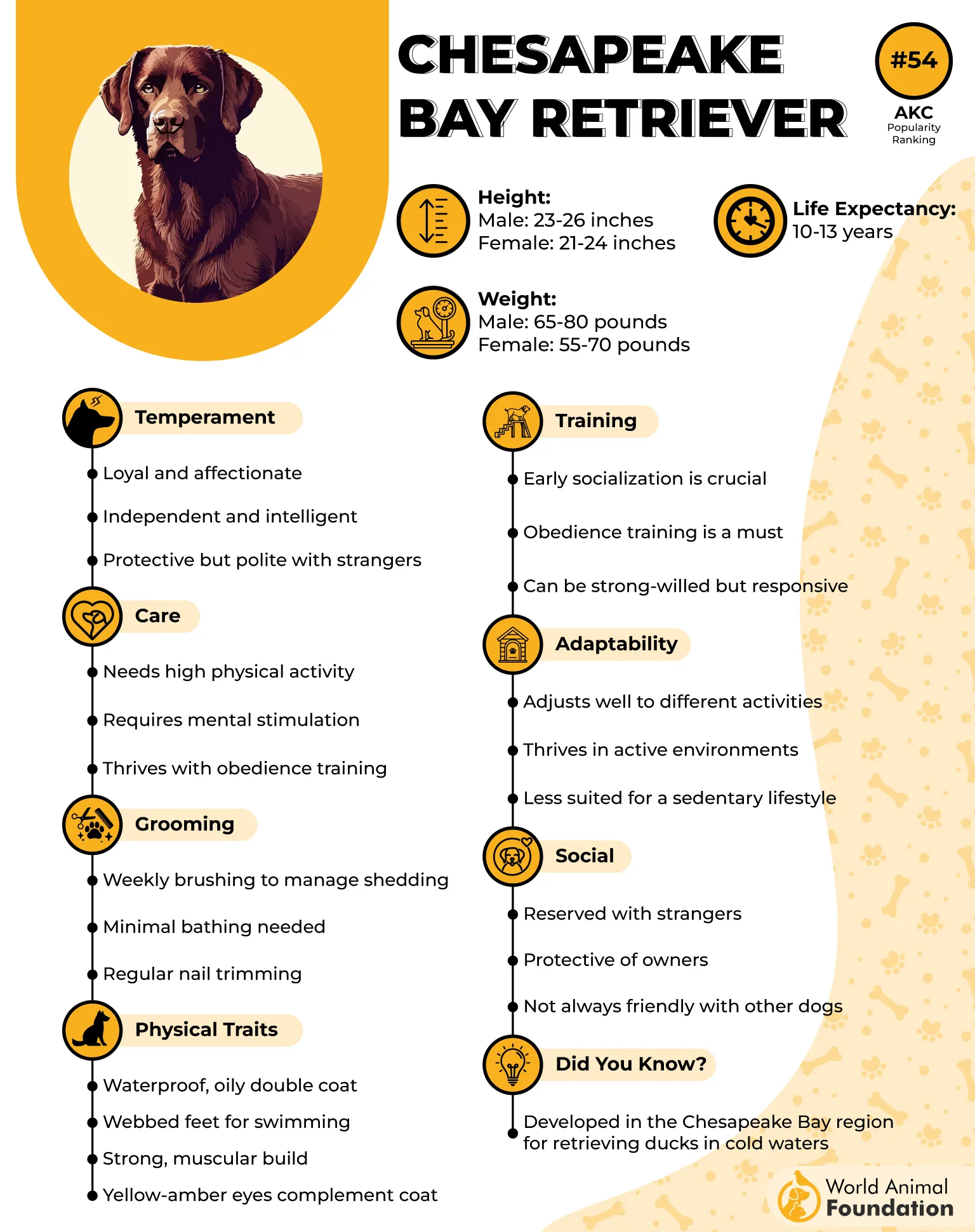
One of their most distinctive features is their wavy, oily coat, which helps them stay dry even in the harshest conditions, perfect for retrieving game from lakes, rivers, and marshes.
Because swimming for hours, retrieving game in icy water, and chasing tennis balls into oblivion is just their warm-up. Chessies don’t just play fetch—they live for it. And if you’re not throwing that stick fast enough? Expect to be judged—hard.
Chessies are quick to learn and respond well to training, but they also have an independent streak and can stubbornly follow their own instincts, according to the American Kennel Club (AKC).
2. Curly-Coated Retriever
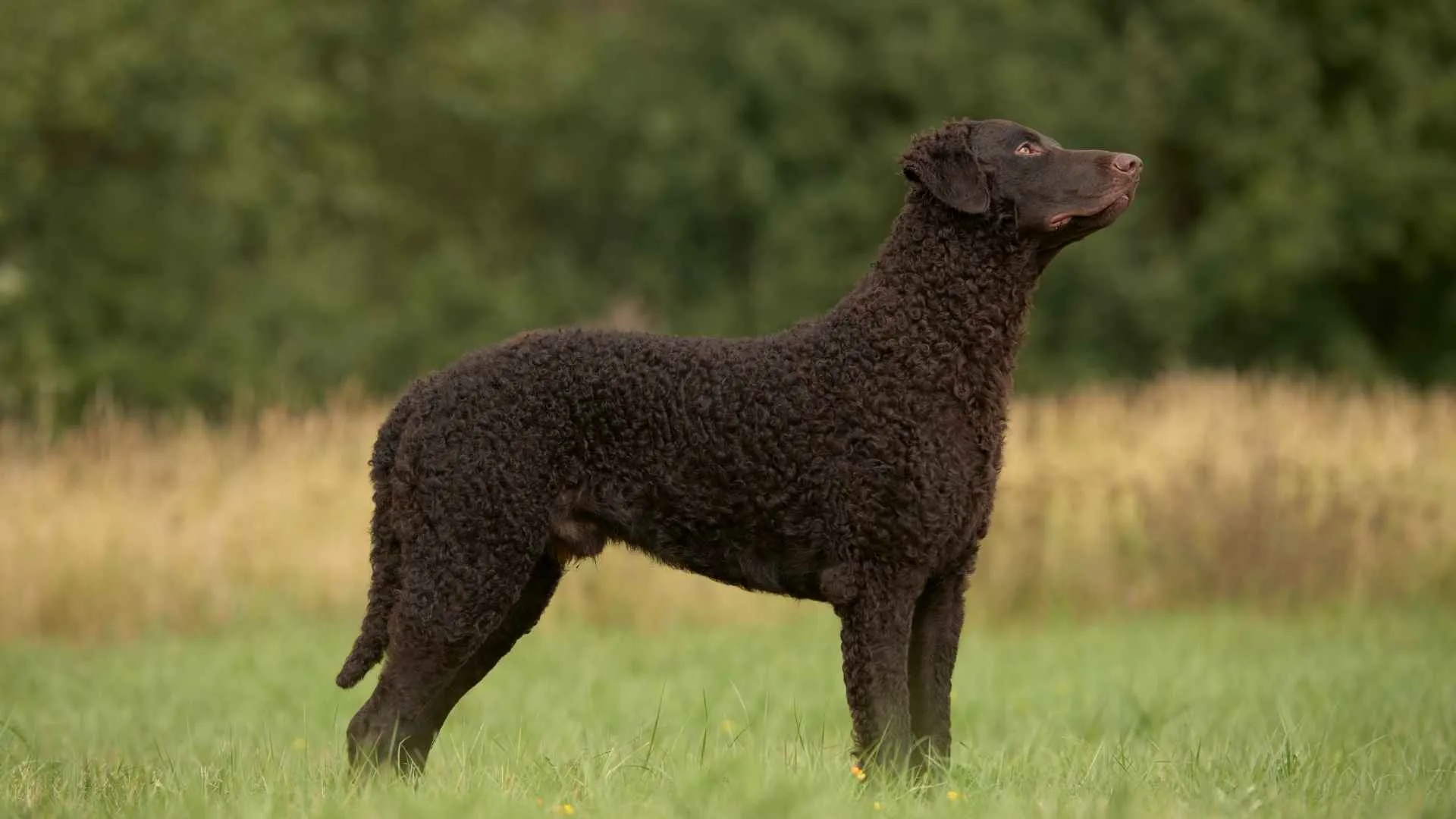
Imagine a poodle joined a track team and never looked back. That’s the Curly-Coated Retriever. They are one of the oldest and most distinctive of the retriever breeds, a true original—equal parts athlete, adventurer, and loyal companion.
Wikipedia notes that the Curly-Coated Retriever was originally developed as a gamekeeper’s gundog, and both its temperament and physique reflect that working heritage.
With their signature curly coats and sharp instincts, Curlies are as functional as they are stylish, blending old-school reliability with a flair for outdoor adventure.
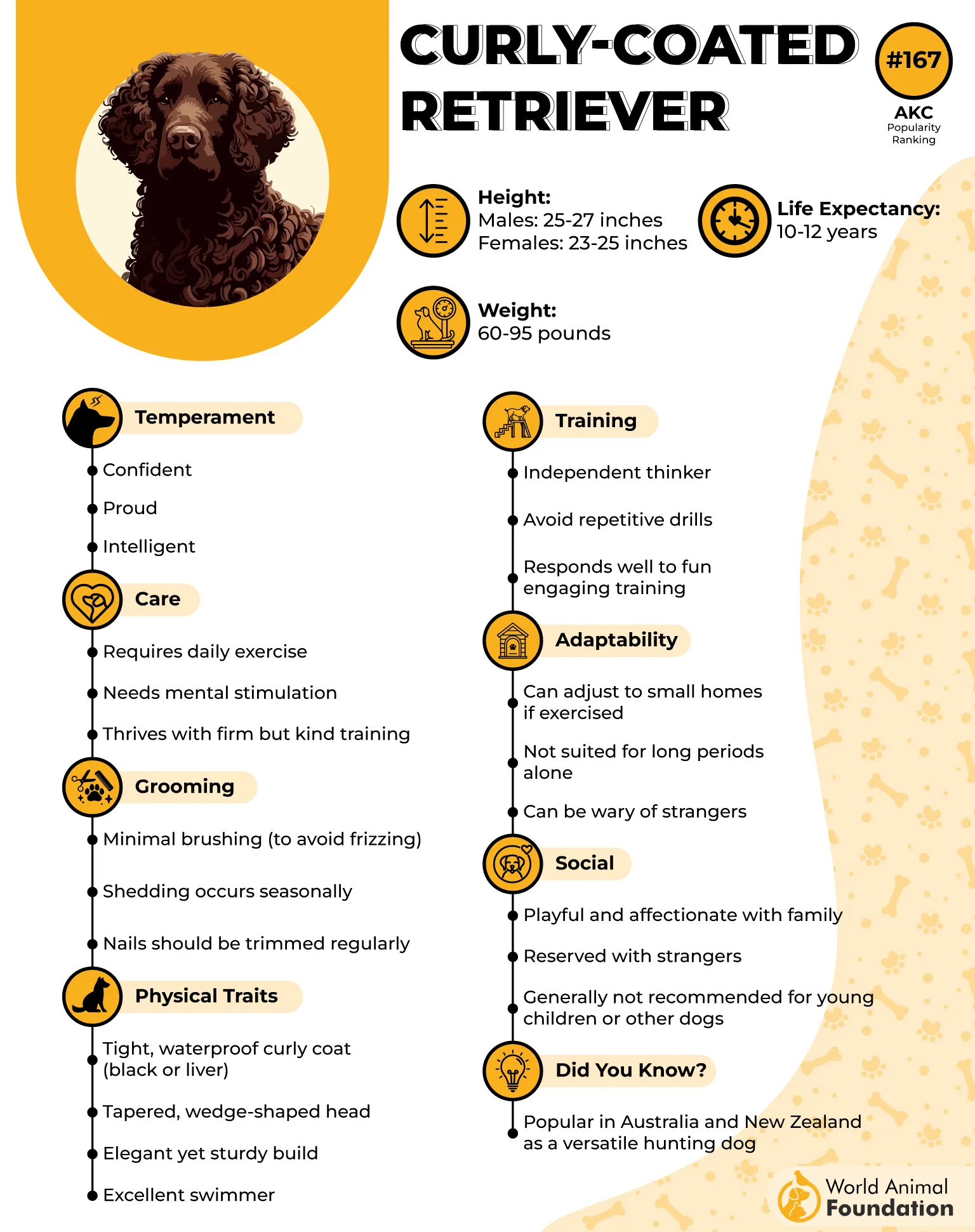
Despite their sturdy build, Curly-Coated Retrievers aren’t demanding when it comes to indoor space. Whether you’re in a city apartment or a countryside cottage, they’re surprisingly adaptable—as long as they get their daily dose of physical exercise of at least an hour.
They love being around people and don’t like being left alone for long periods. If they get bored, they might find their own (messy) ways to have fun—so keep them active and included!
Fun fact:
They may be a little shy at first, but once they trust you, they’re fun, loyal, and full of energy; they’ve got the spirit of a pup who just discovered peanut butter for the first time.
3. English Springer Spaniel
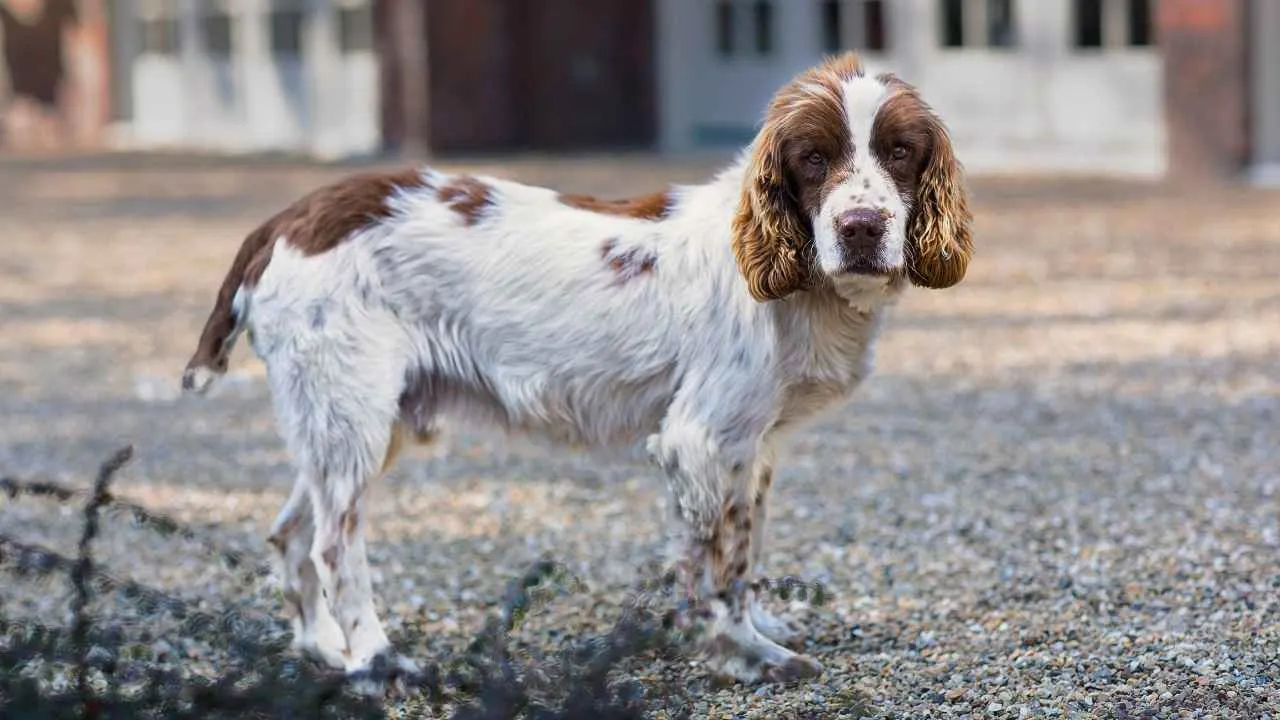
With ears that seem to have a mind of their own and eyes full of mischief, the English Springer Spaniel is like that friend who always suggests, “Let’s go on an adventure!” If there’s a mud puddle, a stick, or a random critter in sight, consider it their next big mission.
Because they were bred for fieldwork, they take their job of flushing out game seriously. Don’t be surprised if your Springer wants to explore every nook and cranny of the backyard—or your living room, or your neighbor’s yard. They’re always on the move.
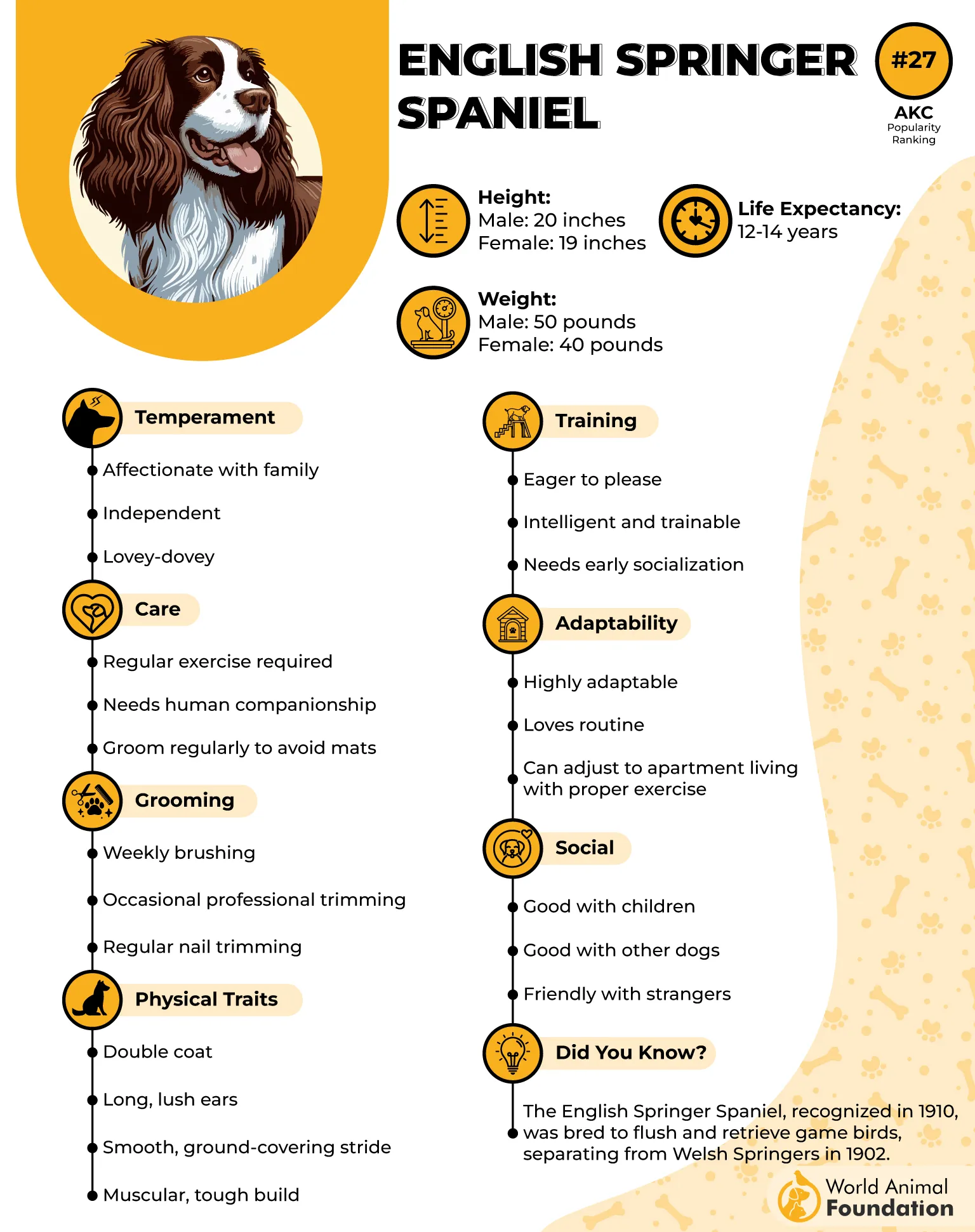
English Springer Spaniels are friendly, eager-to-please dogs that thrive on attention and companionship. Known for their polite manners, they’re great with kids and other pets, making them ideal family companions. They love being involved in every activity, whether it’s a hike, a game of fetch, playing puzzle toys, or simply spending time with their family.
Springers are naturally social and might bark to greet new friends or say, “Let’s play!” While they’re not excessive barkers, a lack of exercise or socialization can lead to more vocal behavior.
Incredibly trainable, Springers excel at various tasks. Originally bred as hunting companions, this high-energy breed has impressive tracking and retrieving abilities. They are extremely intelligent, and their eagerness to please also makes them excellent show dogs. Whether in the field or the show ring, they shine with their skills and charm!
Fun fact:
Springers can run at full speed for miles, yet they’ll still want to play fetch the moment you stop moving. It’s like they’re born to be busy, and their tail never stops wagging while doing it.
4. German Shorthaired Pointer
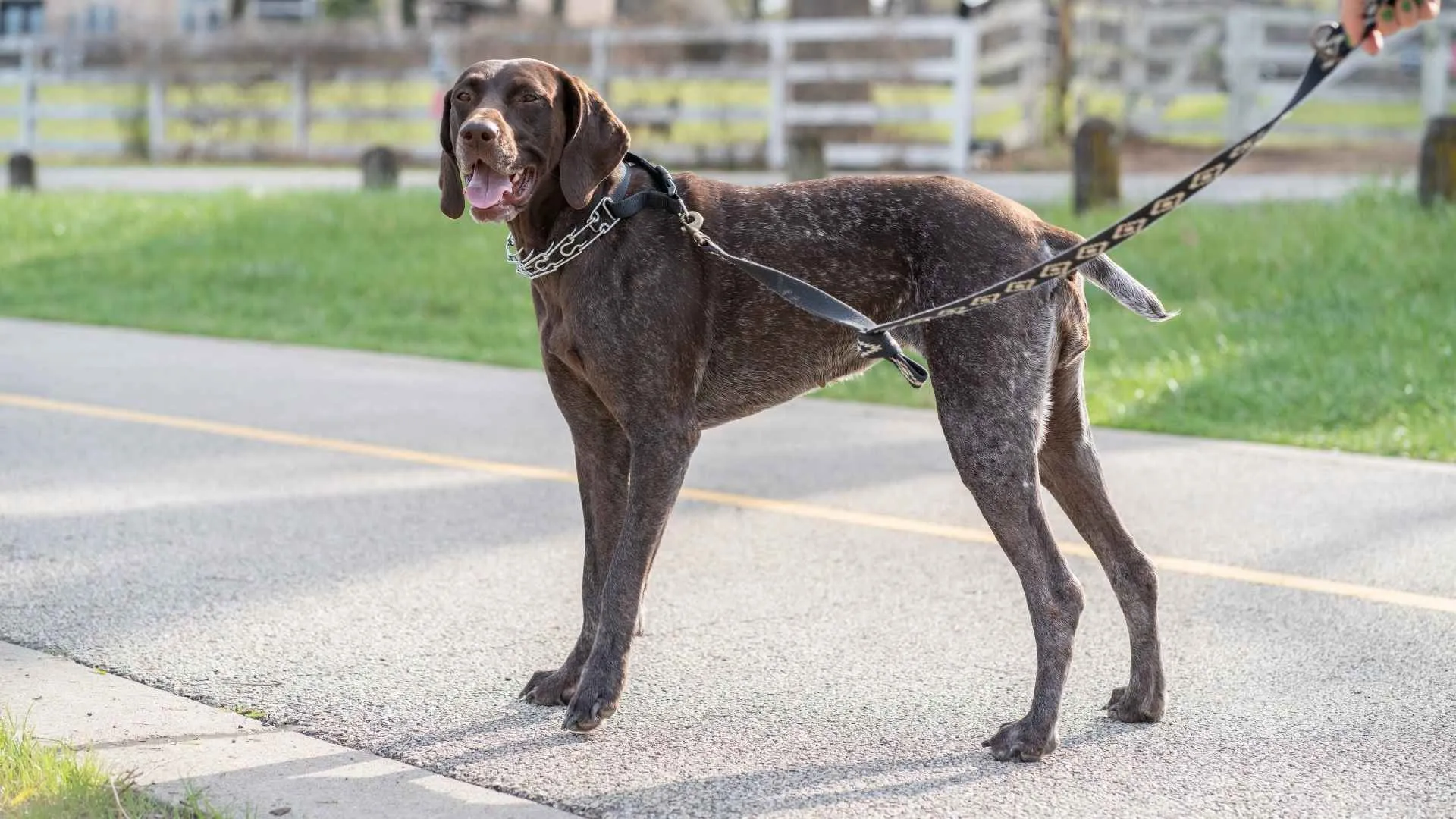
If you ever need a dog to out-exercise you, look no further than this most energetic dog breed, ‘German Shorthaired Pointer.’ With sleek lines, a strong build, and a heart that beats for action, this breed could win gold in any doggy decathlon.
Often described as having a “noble” and “aristocratic” appearance, with their graceful build and elegant demeanor. German Shorthaired Pointers are exceptional working dogs and hunting partners, thanks to their endless energy and endurance.
Bred to hunt both on land and in water, one fascinating fact about them is their webbed feet, which help with swimming. Ranked a perfect five out of five for trainability by the American Kennel Club, these active dogs excel in both hunting and household tasks, according to WebMD.
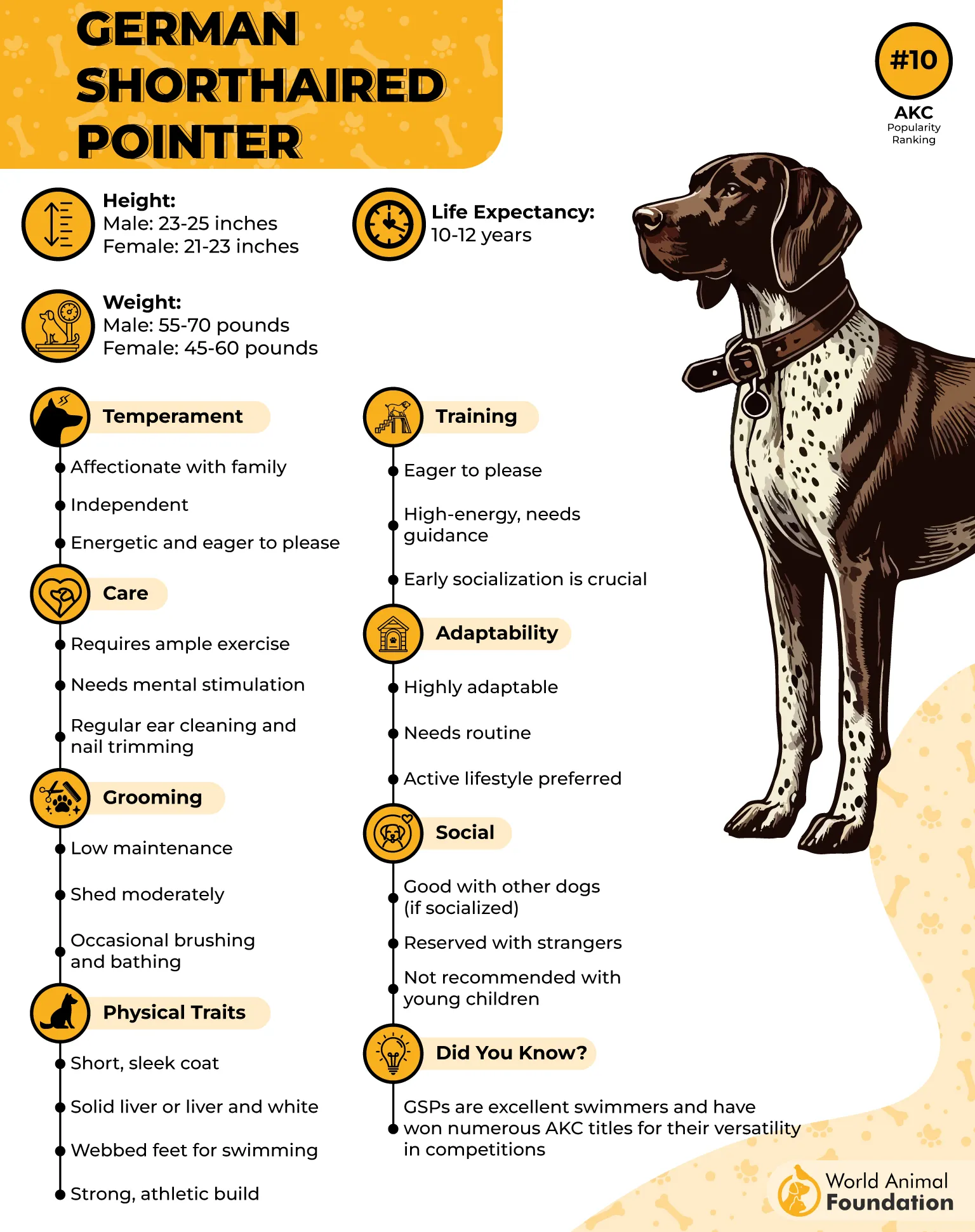
To keep them happy and healthy, German Shorthaired Pointers require plenty of physical activity, ideally twice a day. Their high prey drive, stemming from their hunting instincts, means they may not be the best fit for homes with small animals, especially birds.
Known for their intelligence, German Shorthaired Pointers are quick learners. However, their independent streak can sometimes make training a bit tricky. With consistency and positive reinforcement, though, they’re sure to thrive and be the loyal, energetic companion you need.
Fun fact:
Because they’re a high-performance machine. Whether it’s pointing, retrieving, or running laps, this dog will do it with precision—and will look ridiculously good doing it. They don’t just want to run—they want to break records.
5. Golden Retriever
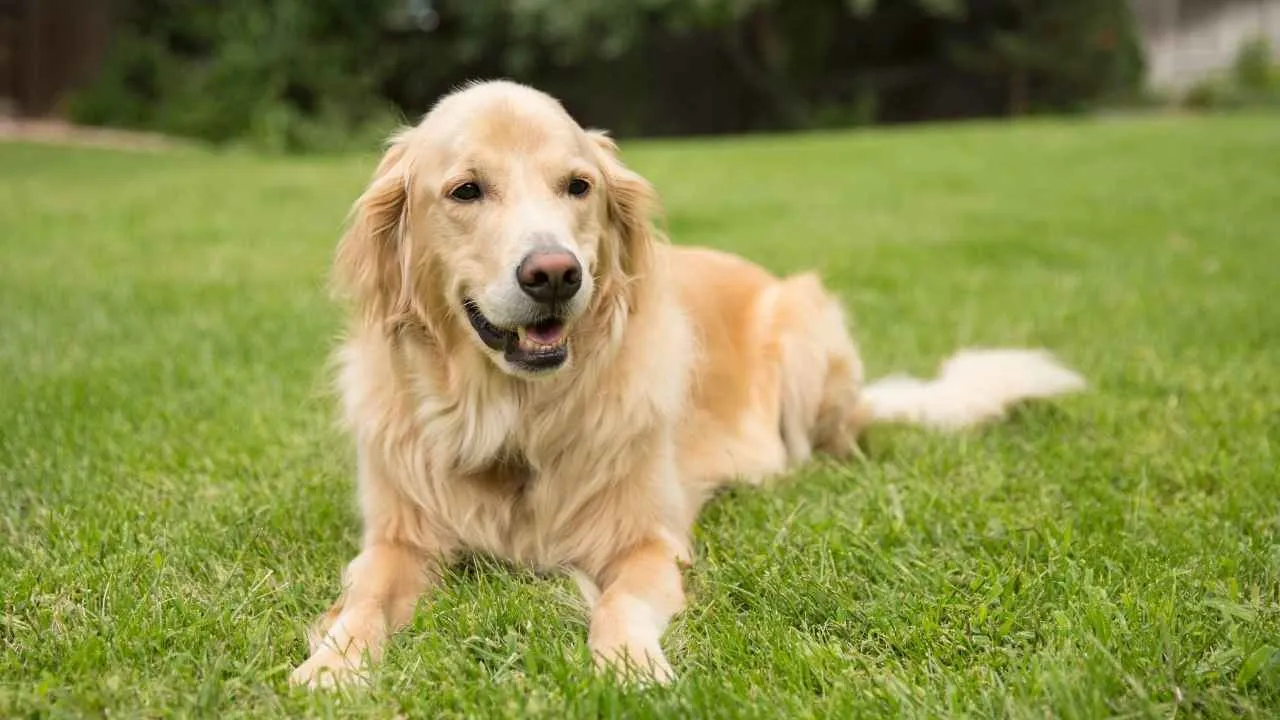
It’s hard not to love the most popular dog breed in the US, the Golden Retriever—and it’s even harder to keep up with them when they’re in “play mode.” These friendly, tail-wagging dynamos are always up for anything, whether it’s a game of fetch, a long hike, or an impromptu swimming contest in the nearest lake.
Golden Retrievers are medium-sized sporting dogs, typically weighing between 55–75 pounds. Known for their sweet and gentle nature, they are friendly dogs that get along well with children, other pets, and even strangers.
Because they’re basically sunshine in dog form. They’re eager to please, love to move, and thrive on human interaction. You’ll never hear a Golden say, “I’m too tired for fetch”—that’s just not in their vocabulary.
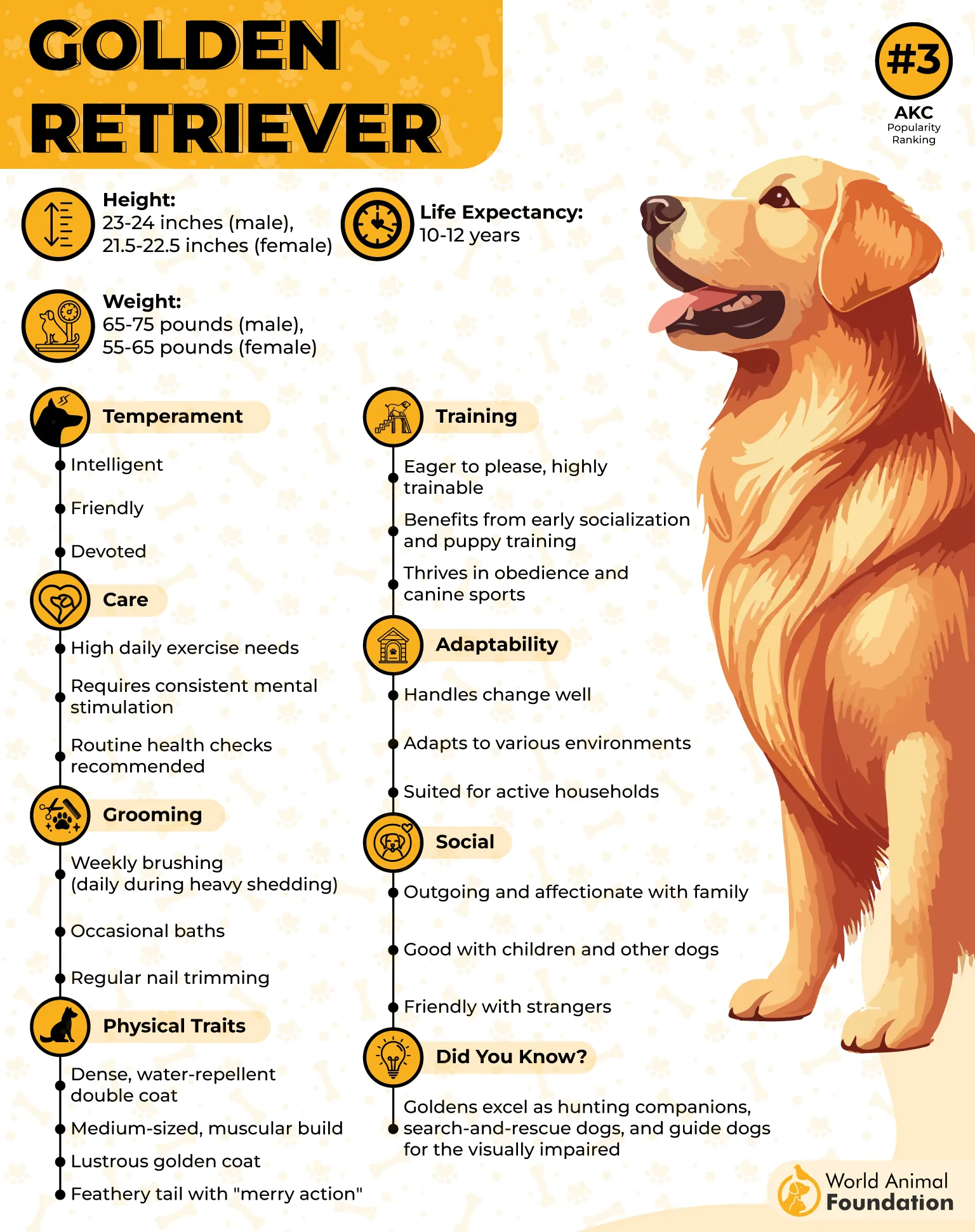
Golden Retrievers are among the most versatile and intelligent breeds in competitive events. They excel at a wide range of activities, including obedience, agility, tracking, and retriever field trials. They even shine in dock diving, where they leap off a dock into the water to retrieve an item. Their natural athleticism, intelligence, and drive make them standout performers in almost any dog sport!
Fun fact:
Despite their boundless energy, Golden Retrievers are some of the most well-behaved dogs on the planet. They can play fetch, jump into a lake, and still come back with the perfect “I’m ready for a belly rub” expression.
6. Labrador Retriever
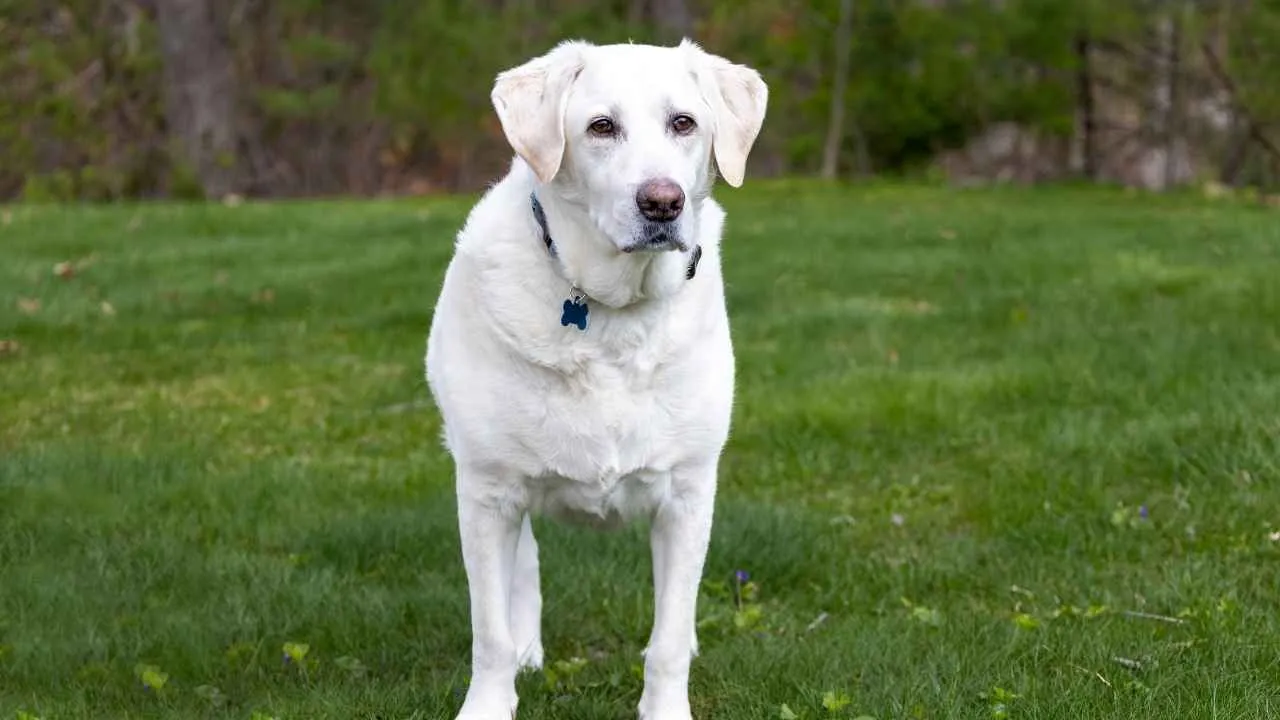
Another sporting dog breed, the Labrador Retriever, is the most popular breed in classic sporting, and for good reason. This affectionate breed is always “on,” whether it’s fetching a ball, going on a hike, or just hanging out with you. If you need an exercise buddy who’ll never back out of a workout, the Lab’s got you covered.
Originally bred as a gun dog to retrieve game, they make excellent hunting companions. Labs thrive on activity—they love the outdoors, water, and anything that involves chasing. If they’re not active, they’re likely daydreaming about their next adventure. They’re ideal for active households who enjoy outdoor activities like swimming, hiking, or hunting.
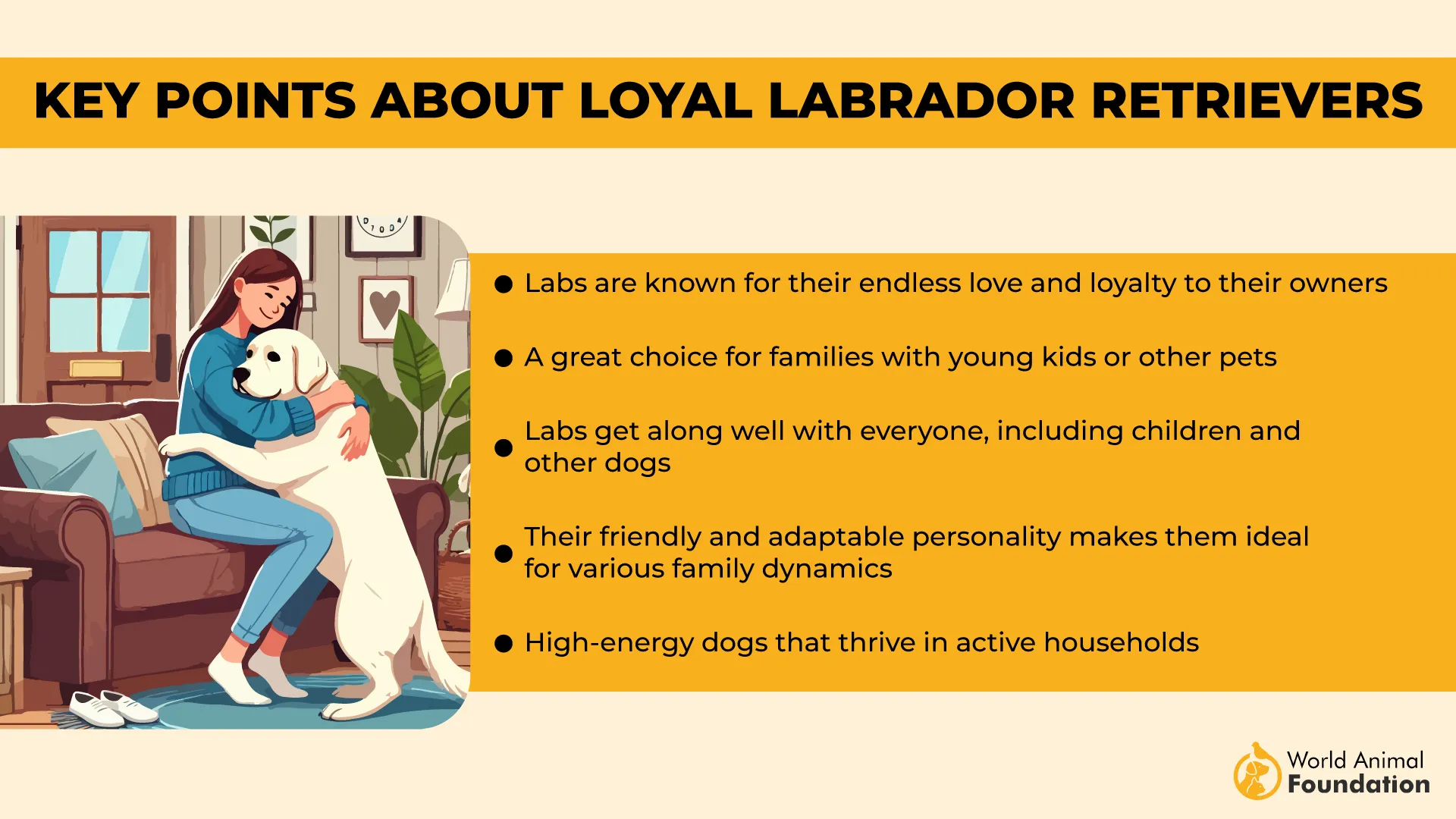
While Labs are friendly with nearly everyone, their high energy and strong tails can be risky for young children, as they might get knocked over. They need an active person who can provide regular exercise and play. Without enough stimulation, a Lab can become unhappy and destructive.
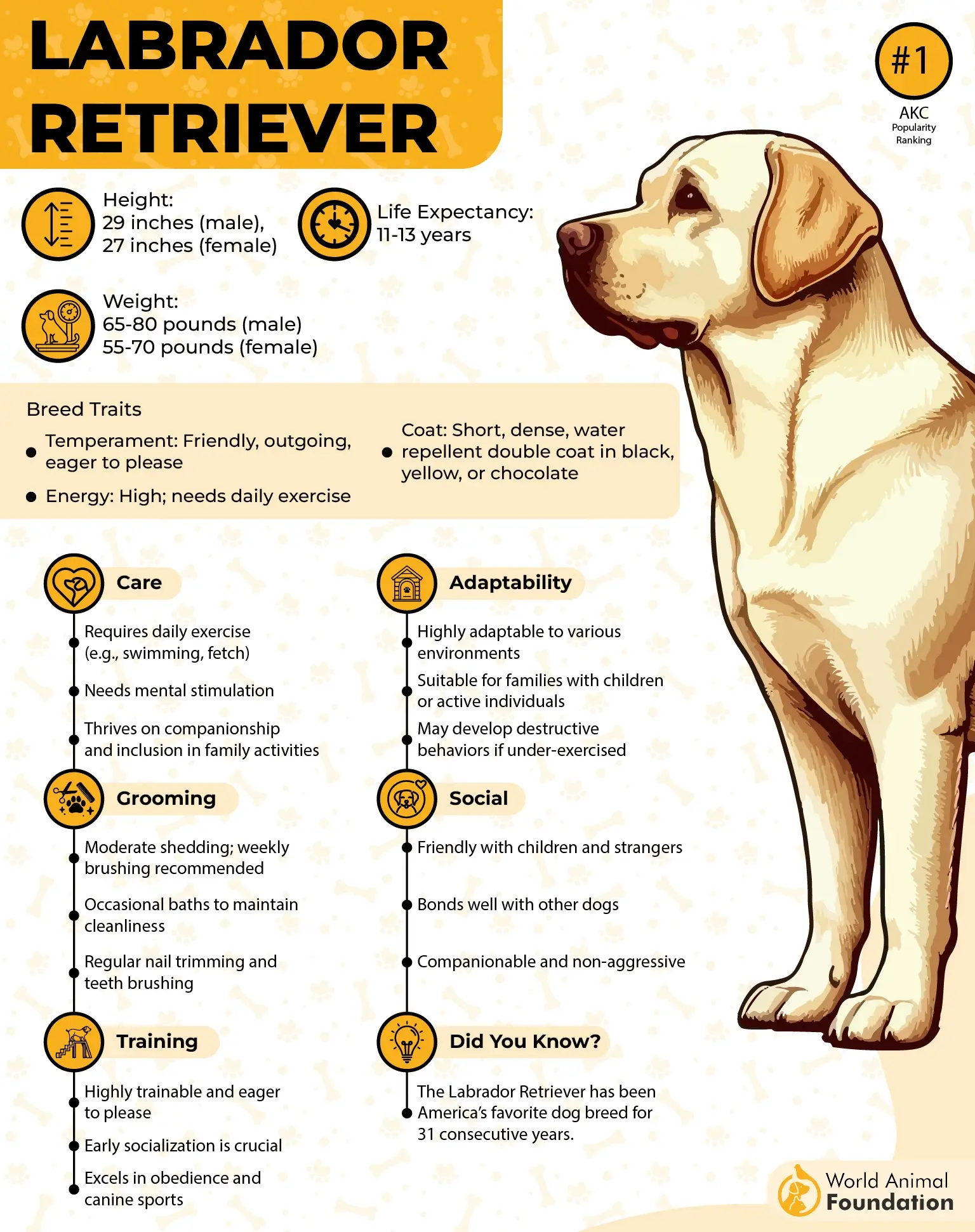
With their loyal and gentle temperament, Labrador Retrievers are also perfect for pet therapy, offering comfort and support to individuals with disabilities.
Fun fact:
Labs have an unmatched love for water. Don’t be surprised if you throw a ball into the ocean, and your Lab sprints faster than you thought possible—because for them, every body of water is just a giant playground.
7. Vizsla
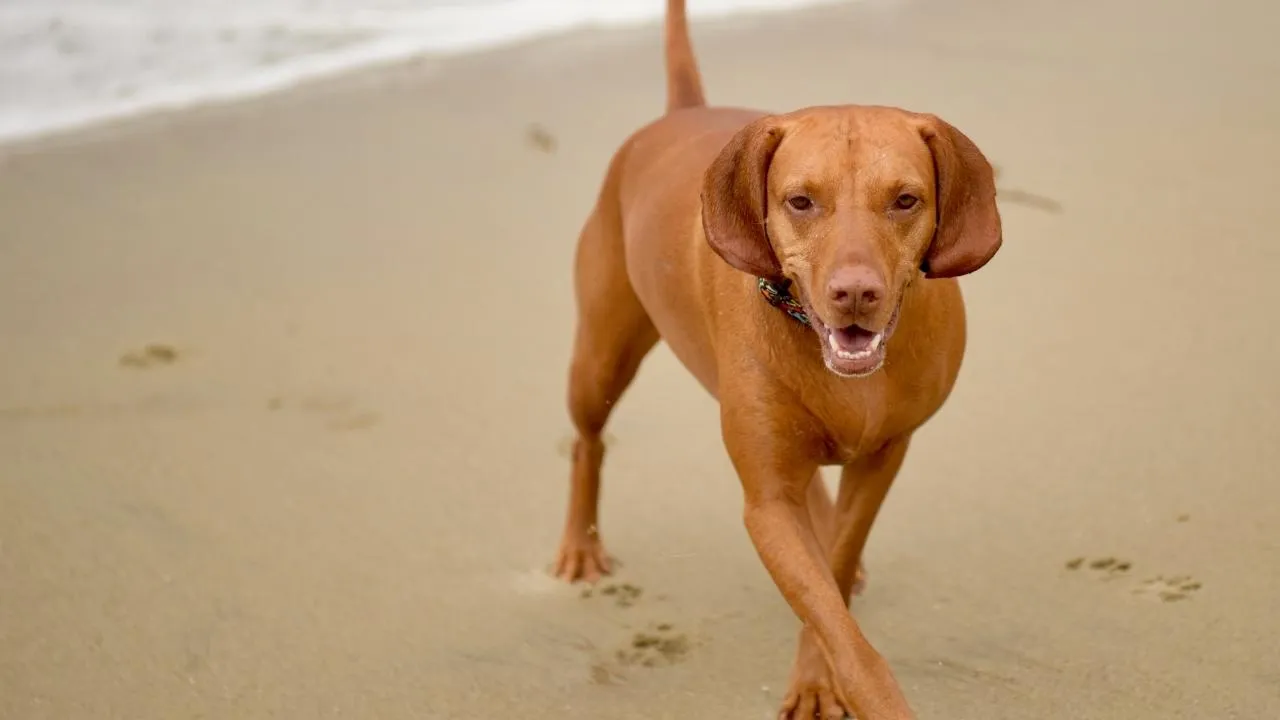
Meet the Vizsla, the ultimate fitness buddy in dog form! If you’ve got energy to burn, this breed will match you every step of the way—and probably leave you needing a nap by the time it’s done.
As one of the oldest-known hunting breeds, Hungarian Vizslas are natural athletes who live to please. Whether it’s running, hunting, or playing fetch, the Vizsla embodies “go big or go home.” But when it’s time to relax, don’t be surprised if your furry friend is curled up beside you on the couch, always ready for some snuggles. After all, they are the definition of a Velcro dog.
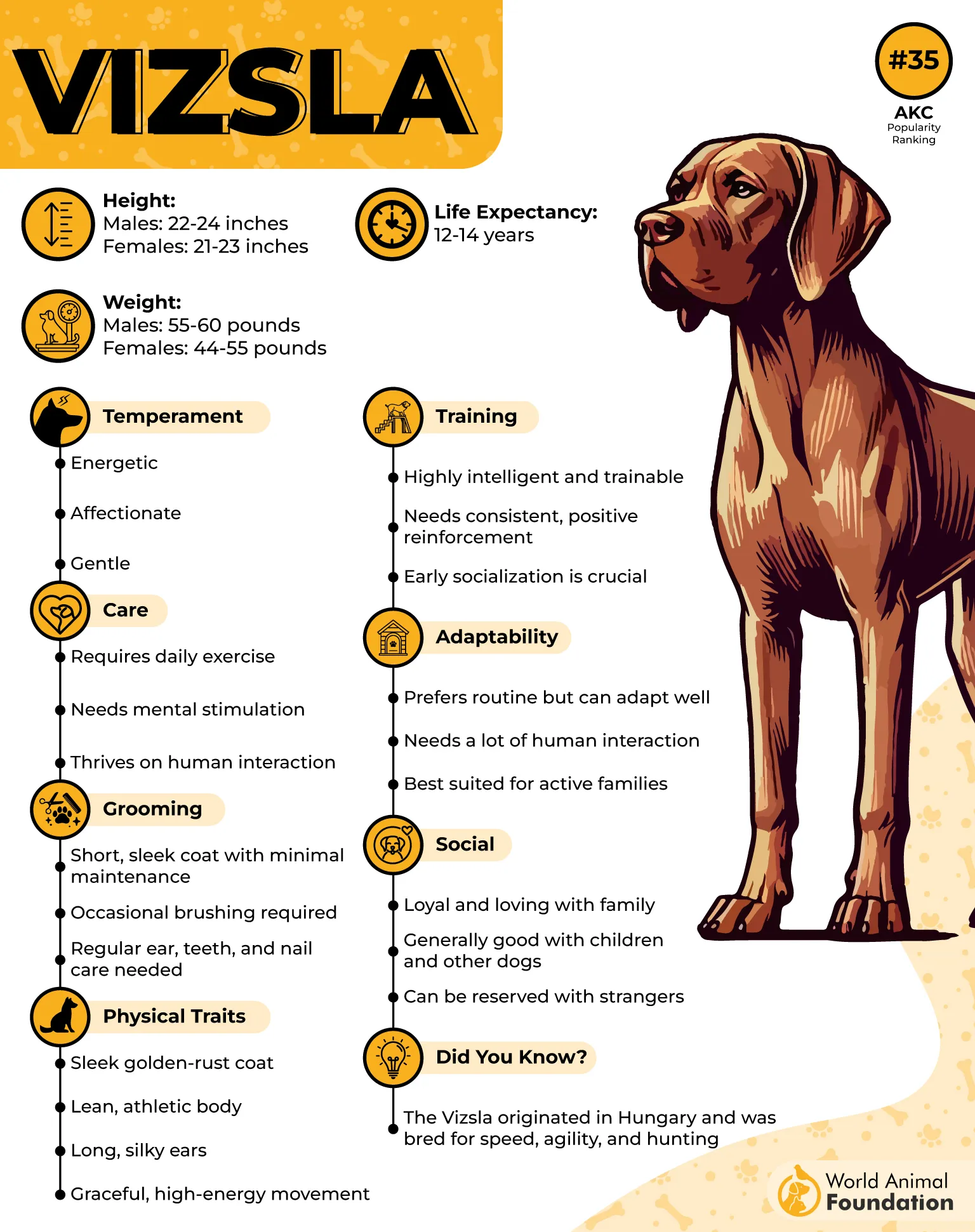
Their boundless energy and curiosity make them better suited for larger spaces than apartments. According to the Vizsla Club of America, while Vizslas don’t require quite as much exercise as some other sporting breeds, they still need at least 45 to 60 minutes of vigorous activity each day as adults.
Being sensitive, Vizslas also thrive under patient care and consistent training, making them ideal for owners with an active lifestyle, who can dedicate time and effort to this affectionate and energetic breed.
Fun fact:
Vizslas are like an athletic lab with a dash of drama. They’re incredibly loyal and love being close to their humans, so prepare for a dog that will never want to leave your side, especially if there’s a run involved.
8. Weimaraner
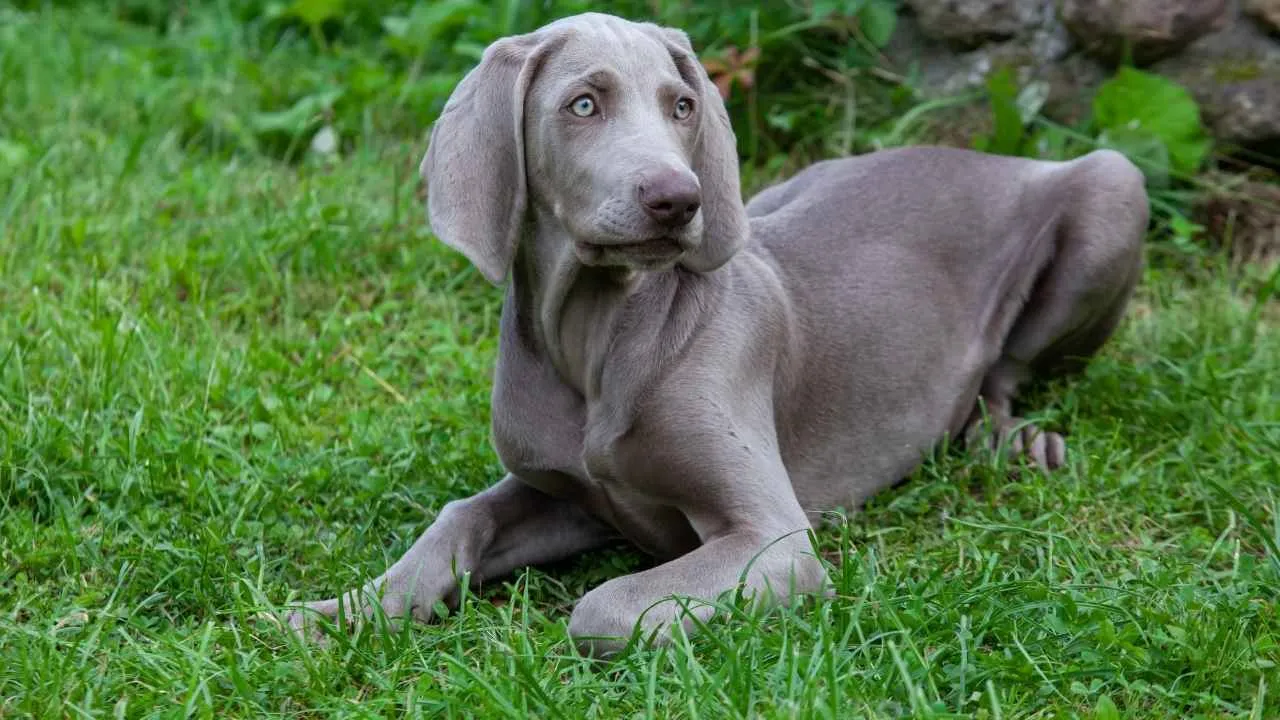
The Weimaraner is like a silver blur that seems to move with the grace of a panther—until it leaps into the water like a crazed puppy. Known for its striking gray coat and intense energy, the Weimaraner is ready for action at all times.
With a history as a hunting dog, the Weimaraner is built to have both endurance and speed. They’re designed for long days of running and working, so a quick walk just won’t cut it. If they’re not darting around chasing a ball, they’ll be running in circles just to make sure you’re paying attention.
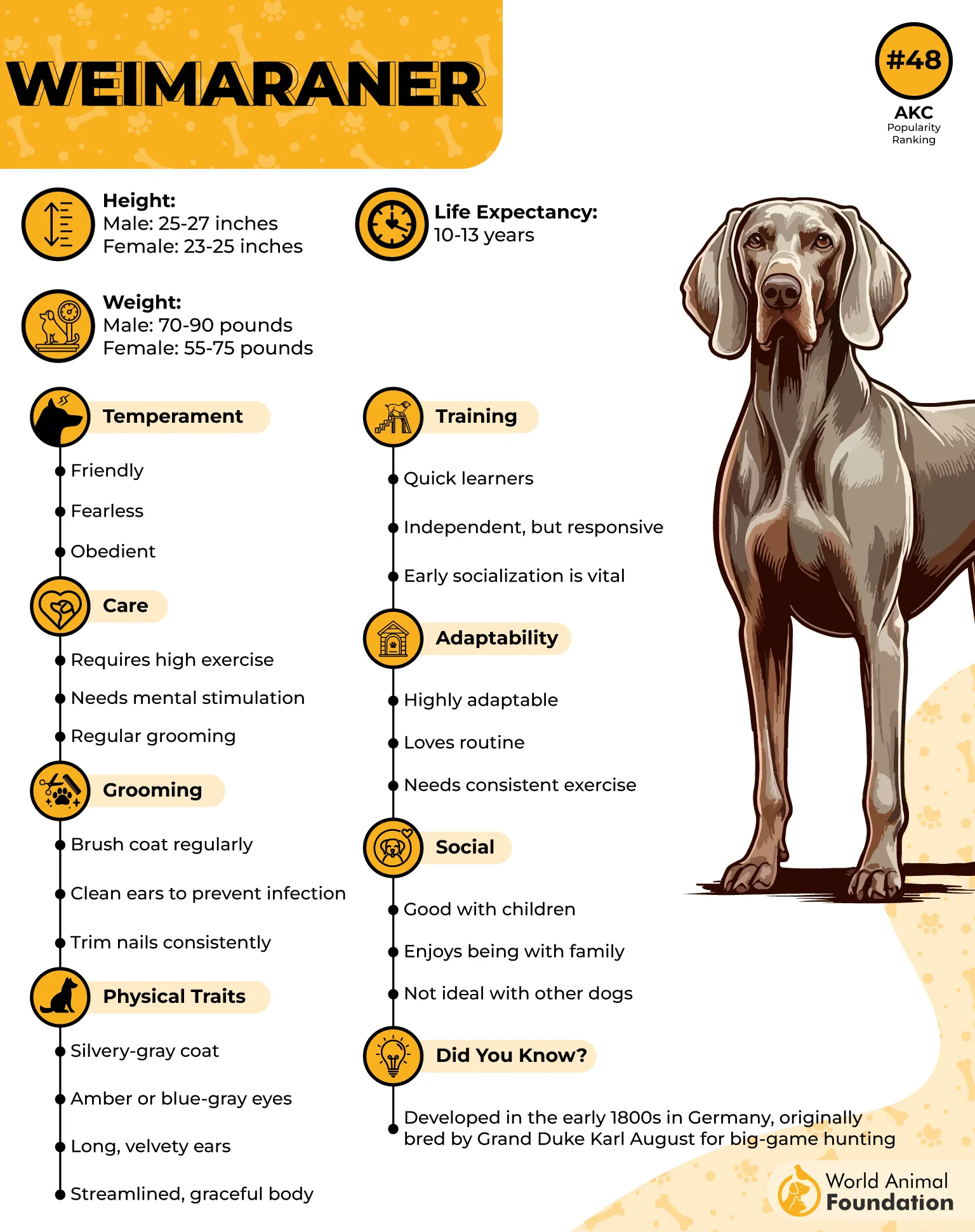
With their sleek, athletic build and long, gray-tipped snout, Weimaraners have a knack for reaching countertops to steal a quick snack, so keep an eye on them if you’re not keen on sharing your lunch!
These active breeds are known for their loyal, obedient, and inquisitive nature, making them great family companions when properly socialized.
They typically get along well with other dogs, but when it comes to smaller pets like cats or small mammals, their hunting instincts might kick in, leading them to see these creatures as something to chase. So, while they’re amazing family pets, it’s wise to keep your little fur babies in check around a Weimaraner.
Fun fact:
Weimaraners are also affectionately known as the “gray ghost” because of their sleek, silver-gray coats that allow them to blend into the environment like hunting ninjas. But when they turn on the turbo, there’s no mistaking them. They’re like a missile on four legs.
9. Nova Scotia Duck Tolling Retriever
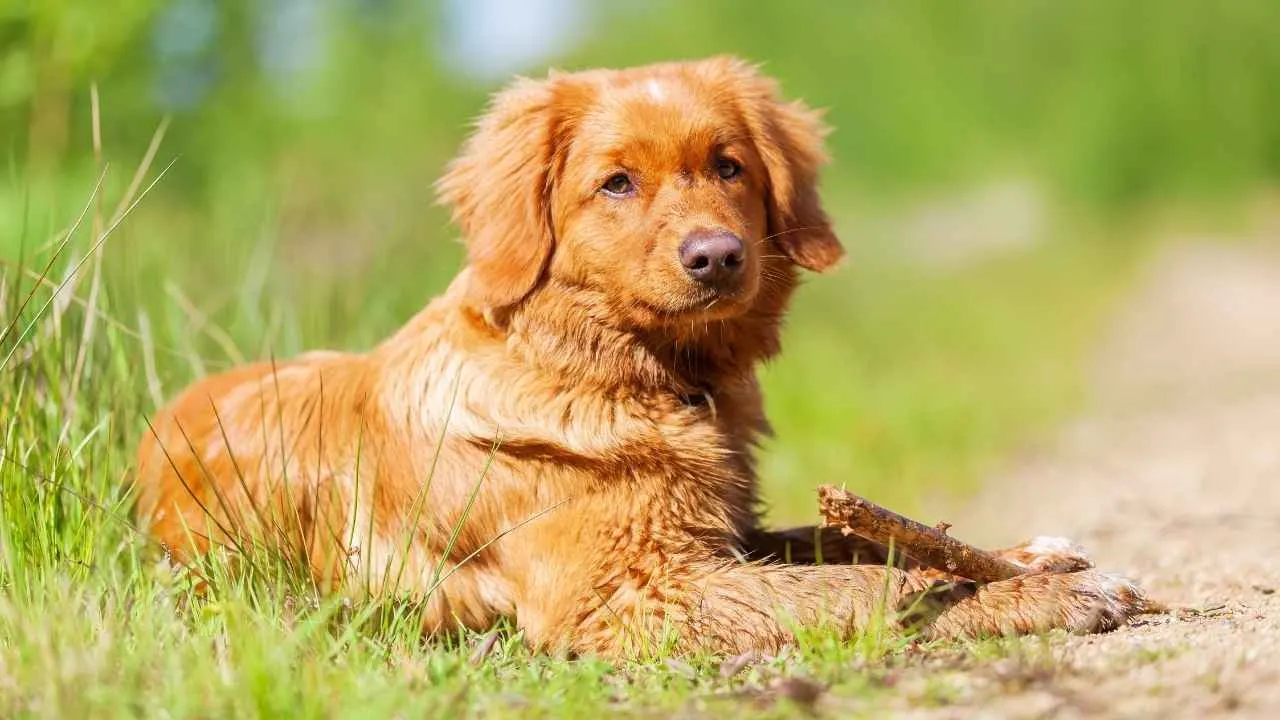
If there’s an athletic breed that’s always up for a challenge, it’s the Nova Scotia Duck Tolling Retriever. These redheads aren’t just about their beauty, though; with that luscious golden coat, they sure know how to turn heads. They’re all about the action, particularly when it comes to retrieving game.
These dogs were bred to lure and retrieve waterfowl, which means they’re built to run, jump, and swim—all day. But they’ve also got a little more spunk than your average retriever, which means they’re more than happy to turn the game of fetch into a full-on cardio session.
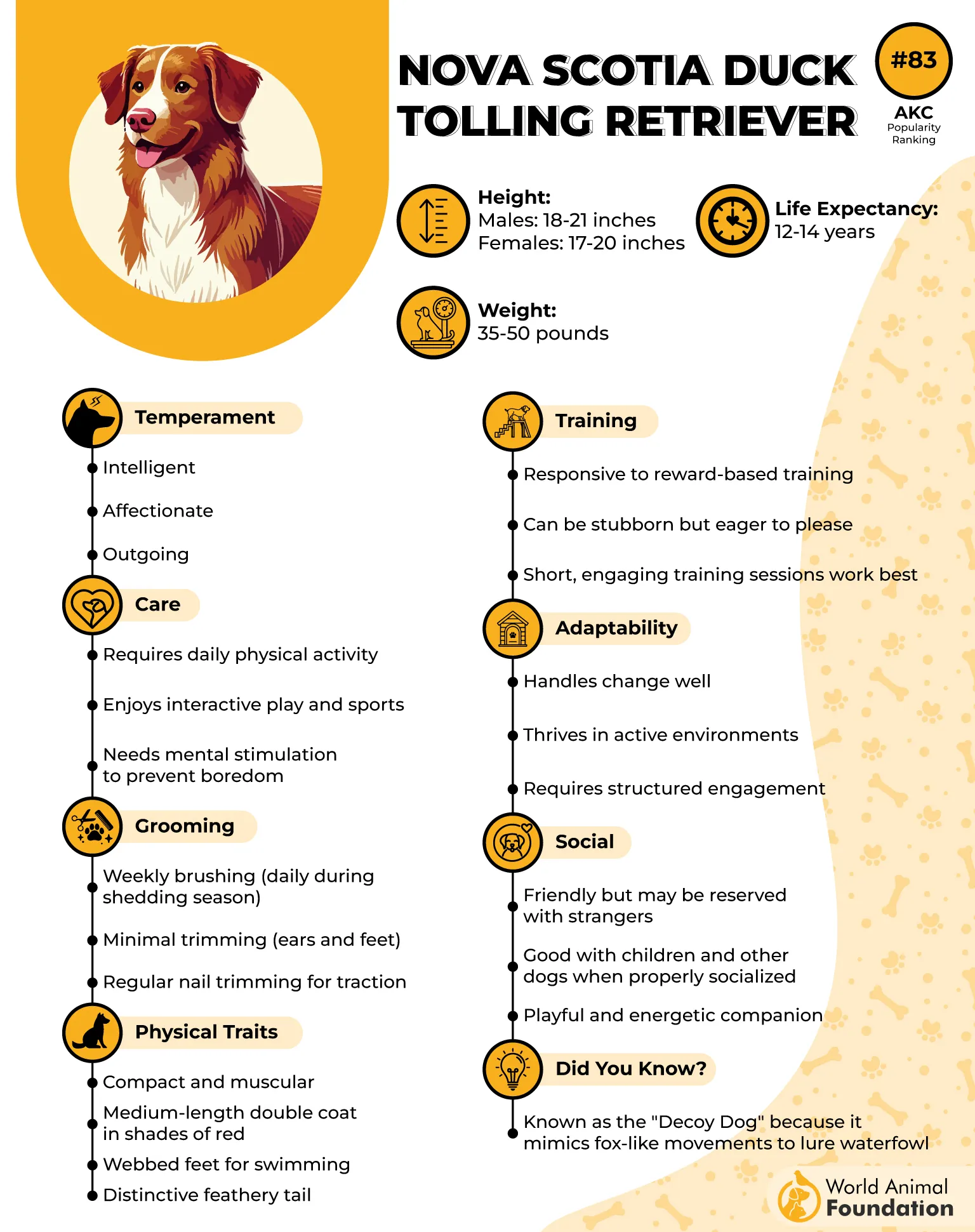
With their friendly personalities, Tollers are great with children and do well in multi-dog households where playtime is part of the routine. They can also get along with cats when introduced properly.
Nova Scotia Duck Tollers are playful, high-energy dogs that thrive on physical and mental stimulation. Without enough engagement, they may turn to destructive behaviors to entertain themselves. While they may be a bit more stubborn than other retrievers, their eagerness to please makes them highly trainable, as long as training is consistent.
Fun fact:
They’re the smallest of the retriever family, but don’t let their size fool you—they’ve got more than enough energy to keep you on your toes. They’re like the pocket-sized dynamo of the sporting dog world.
Conclusion
Hyperactive sporting dog breeds are best suited for owners with active lifestyles who can keep up with their energy and athletic needs. The breeds that didn’t make it to the list—like the Jack Russell Terrier, Siberian Husky, Australian Cattle Dog, Border Collie, Australian Shepherd, German Shepherd, and Belgian Malinois—are not just high-energy; they’re also highly intelligent, and these breeds thrive when given a purpose.
From learning tricks to running long distances or herding other livestock, these pups need daily vigorous exercise, long walks, and plenty of mental stimulation. Without enough daily exercise, even the best breed can develop bad habits. Choosing the right breed means committing to keeping them engaged, happy, and healthy.


